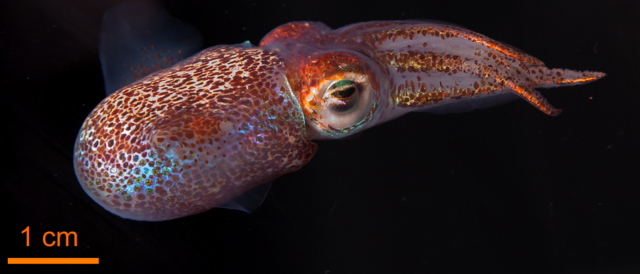 |
| A squid, the traditional model of quorum sensing. It glows because the Vibrio inside it glow. They have to stay coordinated to glow. Quorum sensing lets that happen. More details and photo source here. |
As usual, here's my question: where do phages fit into the picture? If we conclude, as Holm and Vikström do, that this particular bacteria-host relationship would be quite different without quorum sensing molecules, the next logical step is to examine factors in the environment with other impacts on quorum sensing (and AHL production, specifically). Those factors certainly include other bacterial cells but they also include phages. There is clearly a precedent for studying phage-host interactions as they occur in quorum sensing: E. coli has been found to reduce the number of potential lambda phage receptors on its surface in response to AHL levels and quorum sensing genes have even been found in a phage infecting C. difficile. It's time to include the viral component of the microbiome in our quorum sensing models.
*It's surveillance rather than a two-way conversation, unless you consider phagocytosis to be a good metaphor for small talk.
**I should probably mention this 2009 Ng and Bassler review, too, because of Bonnie Bassler.
No comments :
Post a Comment